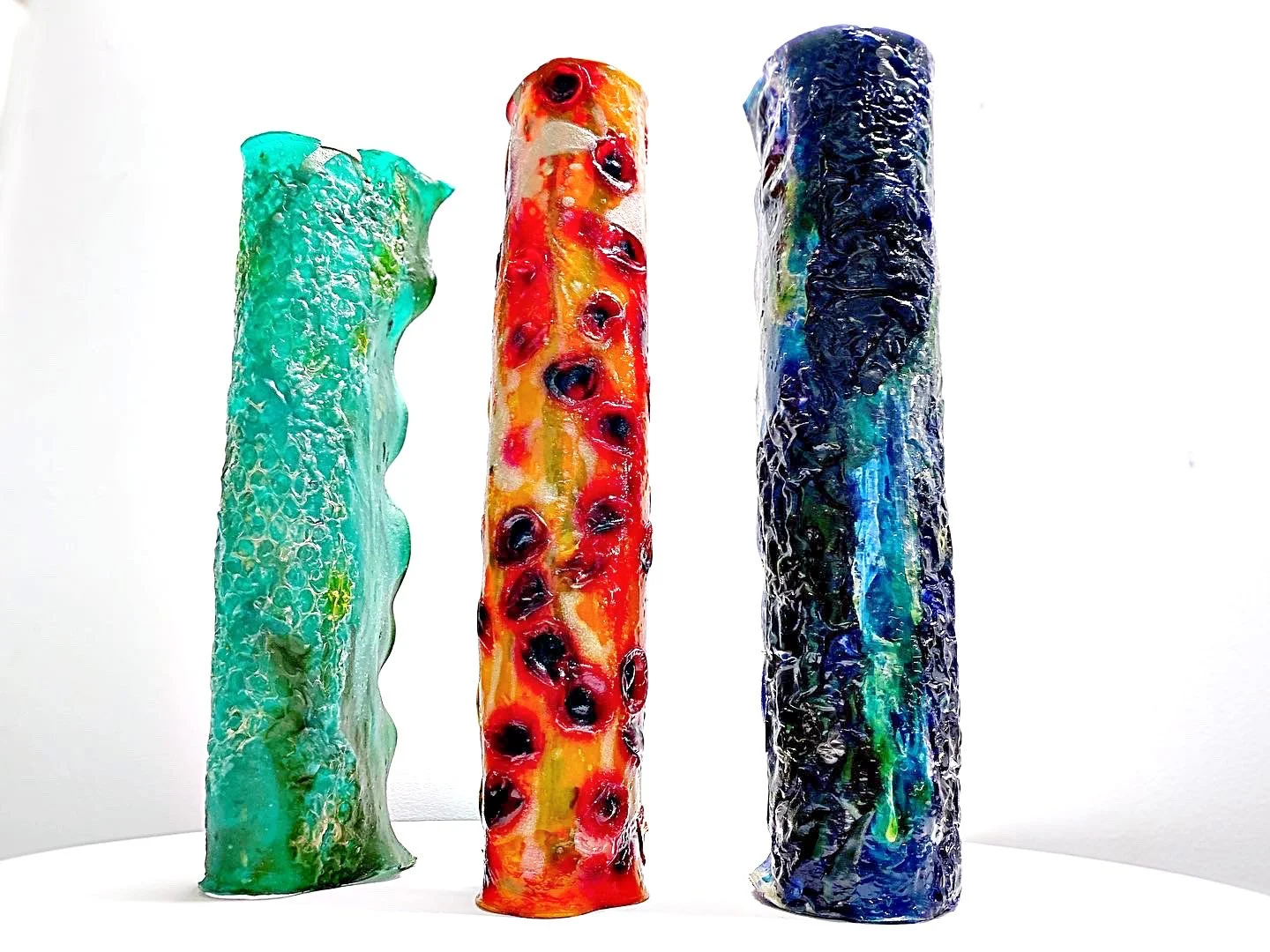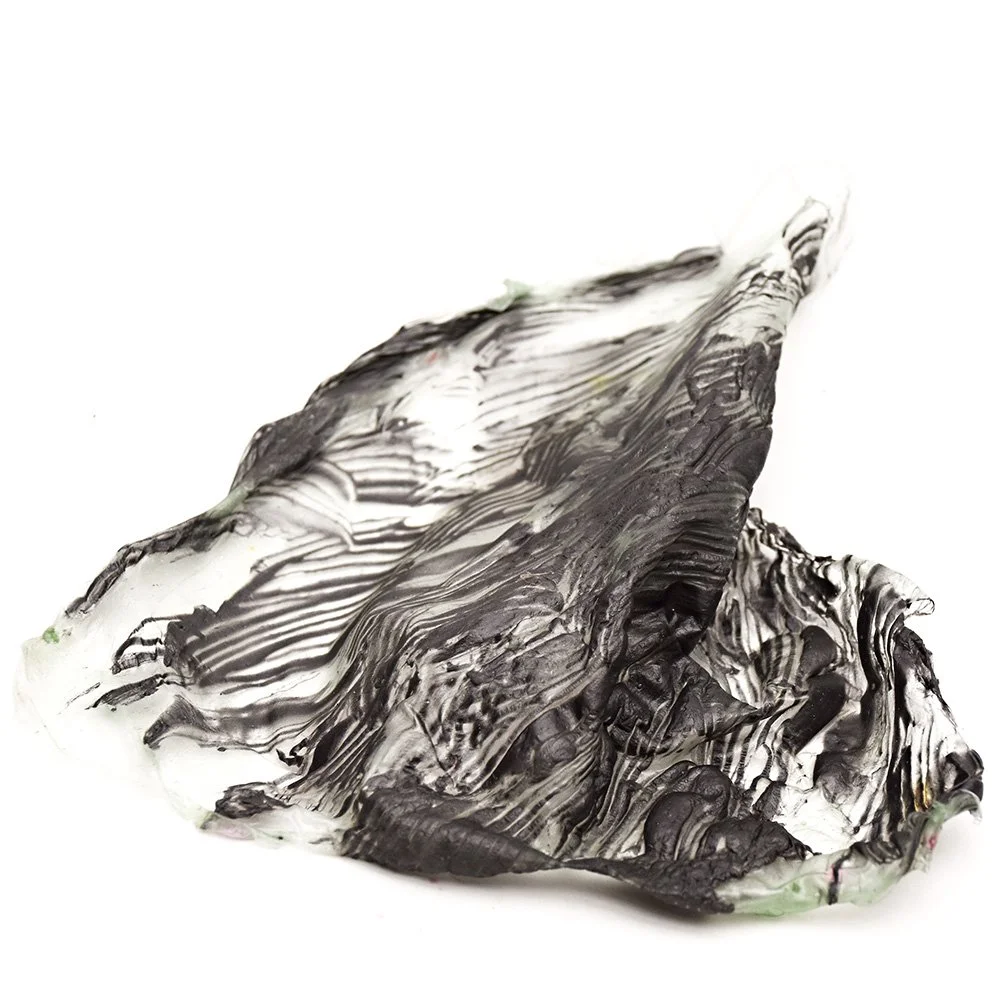
Project Three
Do Jellyfish Get Dizzy?
A process-driven body of work experimenting with creating and utilising algae-based bioplastic within an art practice.
“Art and science have so much in common - the process of trial and error, finding something new and innovative, and to experiment and succeed in a breakthrough”. P. Brant
This process-driven body of work started with the question “Do jellyfish get dizzy?”. The resultant research journey established connections between jellyfish, algae, handmade algae-based bioplastics, closed-loop recycling systems and the notion of immortality.
Turritopsis Dohrnii, also known as the immortal jellyfish, can revert to its juvenile state and recommence its life cycle through a process called transdifferentiation. With the application of heat, Algae-based bioplastic can be reverted to its liquid form (perhaps which can be said to be its juvenile state) and new forms can be created through this closed-loop recycling system an indeterminate number of times.
The algae-based bioplastic these works are made from are natural, biodegradable, non-toxic, and there is little waste in utilising this material. Through an iterative process and experimentation, the artist strives to innovatively use this algae-based bioplastic within an arts practice and showcase how it responds to various stimuli and its environment.






